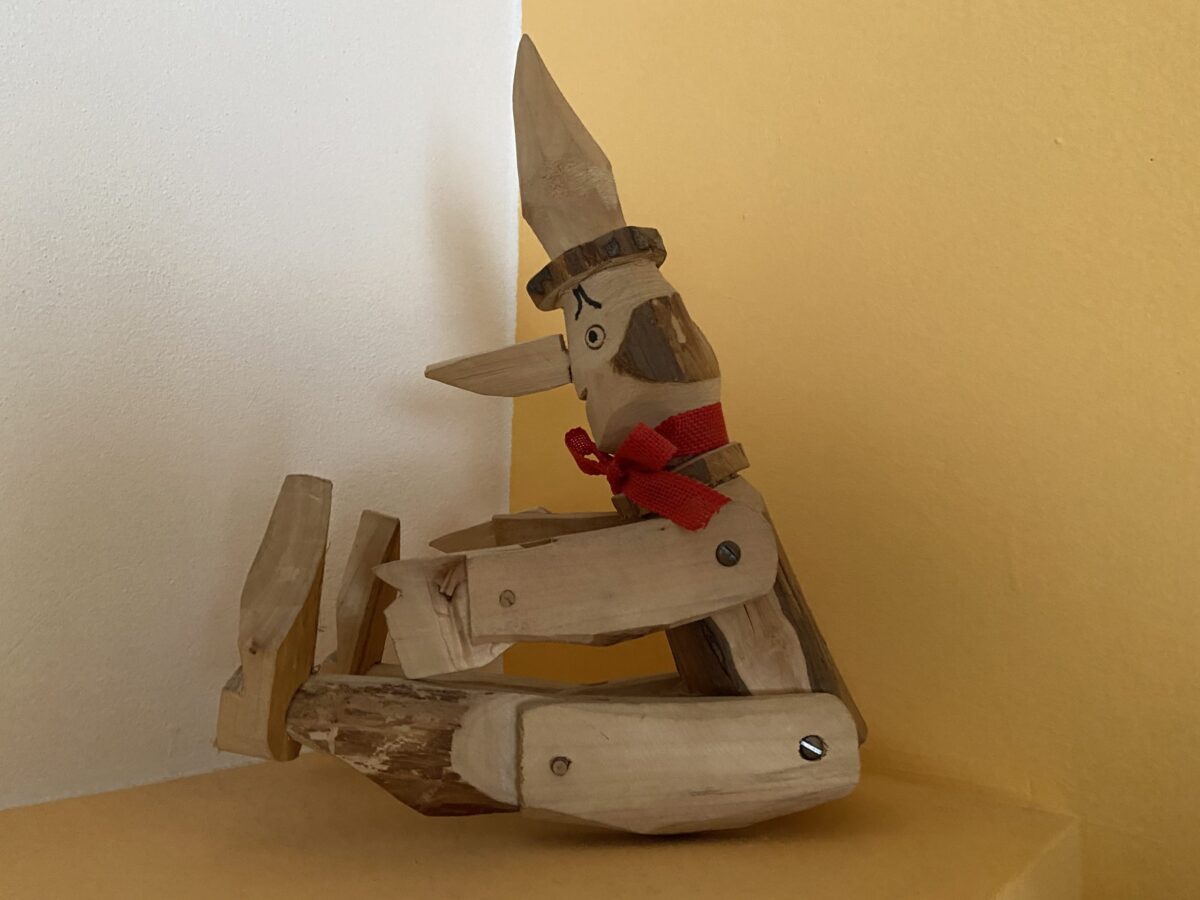Traces of this well -known wooden puppet stretch beyond locations like Castello, Peretola, Sesto Fiorentino only a few km away from Florence.
Whenever we go back to life and be able to move around again, hopefully very soon, I would suggest some itineraries easy to do even with children.
One of these on the outskirt of Florence wants to retrace places very familiar to Pinocchio’s adventures.
Carlo Lorenzini decided to sign his book with the name of Collodi referring to a small town near Lucca in Tuscany, where his mother Angela Orzali was born and worked there for the Marquis Garzoni whose beautiful villa can still be visited today a great example of Italian garden, inside also a great collection of butterflies from all over the world.
However, talking about places referring to Pinocchio, there is a long list of locations in Tuscany, but just to mention a few we could follow signs in Castello and Sesto Fiorentino that refer to people and events in the Pinocchio story.
You could combine an interesting visit to the two Medici villas in Castello, they are both part of the Unesco Heritage. One it’s Villa Petraia that you can visit inside and outside to admire one of the most remarkable examples of Renassaince garden. Whereas the other one is not accessible to public since it has been the home of Crusca Academy since 1583, however it opens on special occasions or on request, but the gardens are free entrance and always open to public.
Medici villa in Castello is mainly famous because the two Botticelli’s masterpieces the “Birth of Venus” and the “Allegory of Spring” now in the Uffizi Gallery, were commissioned by the cousin of Lorenzo il Magnifico for this Villa.
So why coming to Castello? A part from the two splendid historical Medici Villas, in this place the Romans built up a great aqueduct, indeed the name comes from cistern that is castellum aquae, the necessary aqueduct for Florence . In this location Pinocchio story took place because Carlo Lorenzini was living in his brother residence, still a well kept villa nowadays. Walking up the hill towards Villa Petraia we could stop in front of this place where Paolo Lorenzini, Carlo’s brother lived as he worked for the famous Richard Ginori manufactory in ceramic which was founded by the Marquis Ginori in the nearby town Sesto Fiorentino in 1735.
A curiosity tale wants to believe that Carlo Lorenzini could have been an illegitimate child of Marquis Ginori, this could explain why his life still remains shrouded in mistery.

In Castello a 90 year old lady Giovanna Ragionieri before her death was interviewed and stories were recorded as she was an housekeeper in Lorenzini’s residence. At that time, she had to wear a blue uniform and had long hair…so guess what? She surely inspired Carlo Lorenzini to create the fairy with turquoise hair.
Not too far from there we find other places related to Pinocchio like his school and Geppetto’s workshop, Pinocchio’s maker who worked here as an humble woodworker.
Moving a bit further away we reach Sesto Fiorentino public library in the area called Doccia where the famous Richard Ginori manufactury had its ceramic kilns and other workshop space for its porcelain creations.
In Doccia and Colonnata Carlo Lorenzini must have walked around a lot as his brother was at work here as an administrator. We find signs referring to Pinocchio adventures, such as the “hostaria” Red Prawn Inn where Pinocchio meets his honest John the fox and his fellow Gideon the Cat.
In this same zone Colonnata we find the beautiful Villa Gerini that inspired the author for the Field of Miracles, where coins could be grown into a money producing tree, according to the Fox and Cat’s lies.
In this historical Villa Gerini in Sesto Fiorentino, the Italian association Pinocchio a casa sua aims to establish a museum completely dedicated to Pinocchio, today it is open to public only on request, inside there is a permanent collection of material on Pinocchio, publications, toys and lot of items related to the famous puppet.
Sesto Fiorentino it’s the town of artistic ceramics since the Richard Ginori manufactory opening in 1735, so the local artist ceramist Stefano Innocenti has created a vast collection of Pinocchio’s characters to keep on a permanent display at the Villa Gerini, it is really worth a visit…whenever possible!
For further details and info on Castello Medici villas and Pinocchio highlights in Sesto Fiorentino please contact me on facebook








